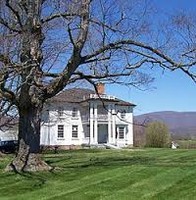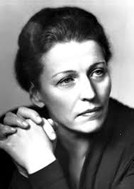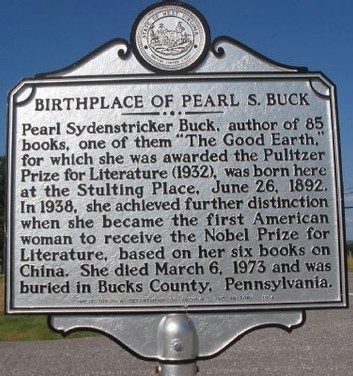Pearl S. Buck Birthplace
Introduction
Author-Uploaded Audio
Listen to a narration of this entry's description by Kathleen Thompson.
Text-to-speech Audio
Images
Birthplace of Pearl S. Buck outside of Hillsboro, West Virginia

Pearl S. Buck circa 1930s.

WV Historical Marker

Backstory and Context
Author-Uploaded Audio
Listen to a narration of this entry's description by Kathleen Thompson.
Text-to-speech Audio
Pearl S. Buck wrote prolifically during her time in both China and the U.S. Her life in America was also marked by her fearless activism for civil rights and equal rights, as well as her continual efforts on behalf of the Chinese people and of interracial children. Buck's novel The Good Earth was the best-selling fiction book in the United States in 1931 and 1932 and won the Pulitzer Prize in 1932. In 1938, she was awarded the Nobel Prize in Literature. A world-renowned author, she wrote over 100 books and hundreds of short stories and magazine articles. Her books have been translated into 69 foreign languages.1
Pearl's maternal family, the Stultings, fled religious persecution in Holland and settled in the Appalachian Mountains on a 16-acre farm outside of Hillsboro in Pocahontas County, West Virginia. When they arrived, Pearl S. Buck's great grandfather, Cornelius Stulting, aimed to build a house like the one they had in Holland.2
The modest two-story, hand-built home contains period antiques that represent the lifestyle of a late-19th and early 20th-century working family. It was listed in the National Register of Historic Places on June 15, 1970. In addition to the house, the museum property contains a period-era carpentry shop and barn with over 100 historic farm and woodworking tools, 13 acres of scenic Appalachian farmland surrounded by the Monongahela National Forest, and the log home of Buck's paternal family, the Sydenstrickers.
Pearl Buck's mother, Caroline, was born in the house. She eventually married Absalom Sydenstricker and, shortly after their marriage, the couple left for China to become missionaries. They visited the family home frequently on their trips back to the United States. During one of these visits, on June 26, 1892, Pearl Comfort Sydenstricker was born in her grandfather's home. 3 She only remained there for three months before accompanying her parents to China.
Buck learned of the house through her mother's stories while they were living in various villages in China as missionaries. Pearl was captivated by the stories, and came to think of the house as all that was good about her birth country. In her words,
"It became the symbol of security and peace in a world where there was neither security nor peace."4
She returned to the house twice during her youth, spending the summer of 1901 and August of 1902 there before returning to China. Buck next returned in 1909, after her Grandfather had died, and an uncle had taken charge of the house. She spent the summer there before starting college at Randolph-Macon. She vacationed there briefly the next summer, but that was the last time she visited while the house was still in the family.
She saw the house again in 1963 during a visit to celebrate WV's 100th anniversary of Statehood, and at that time had the idea to buy the house and present it to the State so that they could make it into a park or memorial. That idea never came to fruition.
The cause for the house was taken up by Jim Comstock, the editor the WV Hillbilly, a weekly newspaper with a distribution in 40 states and six foreign countries. Comstock organized the beginnings of what was to become the Pearl S Buck Birthplace Foundation (PSBBF), solicited donations from around the world, and finally bought the house and presented it to Pearl under the stewardship of the foundation in 1965.
In 1968, a $100,000 grant was received for the restoration of the birthplace and grounds. Robert Jacobson served as the first volunteer executive director of the foundation, followed by David Corcoran, who became the first paid director in 1972. The house was listed on the National Register of Historic Places in 1970 and opened as a museum in 1974, a year after Pearl's death.
The PSBBF continues to function as the overseer of the birthplace and grounds. The foundation is governed by a 12 member Board, of which a 5 member Executive Board, consisting of 4 elected officers and one member at large, conducts the day-to-day administration. During the summer months, the house is open for tours. Currently, there is no Executive Director.
Sources
1 Legacy. Pearl S. Buck Birthplace. Accessed February 13, 2019. http://www.pearlsbuckbirthplace.com/history/legacy.
2 Birthplace. Pearl S. Buck Birthplace. Accessed February 13, 2019. http://www.pearlsbuckbirthplace.com/history/birthplace.
3 Biography. Pearl S. Buck Birthplace. Accessed February 13, 2019. http://www.pearlsbuckbirthplace.com/history/biography.
4"A Gateway to America . . ," in West Virginia?. West Virginia University Pearl S. Buck Collection. May 02, 2018. Accessed February 16, 2019. https://pearlsbuck.lib.wvu.edu/partnership/foundation.
"Birthplace of Pearl S. Buck." The Historical Marker Database. Accessed October 6, 2020. https://www.hmdb.org/m.asp?m=34143.
